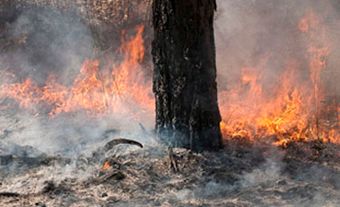This article is from our Toronto Feature series. Features from past programs are not updated.
This content is from a series created in partnership with Museum Services of the City of Toronto and Heritage Toronto. We gratefully acknowledge funding from the Ontario Ministry of Tourism, Culture and Sport, and the Department of Canadian Heritage.
Toronto Feature: Queen's Park
Canada's First Municipal Park
At noon on 11 September 1860, a young Prince of Wales, eldest son of Queen Victoria and future King Edward VII, opened Queen's Park in a ceremony attended by thousands who stood in the pouring rain. Just over 100 years later, in 1969, an equestrian statue of that same king was brought from New Delhi, India, and installed in the centre of the park.
Queen's Park was familiar to the public long before it became one of Canada's first municipal parks. It had been granted to King's College (the future University of Toronto), which had hired an architect from New York to create a scenic place for walking and riding. Visitors gained access to the park through two gated, tree-lined avenues, one to the north and one to the south. It was so popular that the city of Toronto negotiated a lease with the university for a portion of the grounds to be used as a public park, and Queen's Park was born. The lease also stipulated that the provincial government had the right to build a new legislative building in the park if it so desired. The province soon acted on this option.
Although Ontario's new legislature split the park in two when it was completed in 1892, people kept coming to attend military parades, concerts and memorial services--not to mention political gatherings. The north park was busy, with public speakers' forums every Sunday, new walks and pathways and a bandstand. Around its edges were built some of the city's grandest homes, and its grounds became a haven for statuary.
Statues in Queen's Park include likenesses of Queen Victoria, John Graves Simcoe, George Brown, King George V, Sir John A. Macdonald, and premiers of Ontario John Sandfield Macdonald, Sir Oliver Mowat and Sir James Pliny Whitney. In 1923 the 48th Highlander's War Memorial was erected at the north end of the park.

 Share on Facebook
Share on Facebook Share on X
Share on X Share by Email
Share by Email Share on Google Classroom
Share on Google Classroom





